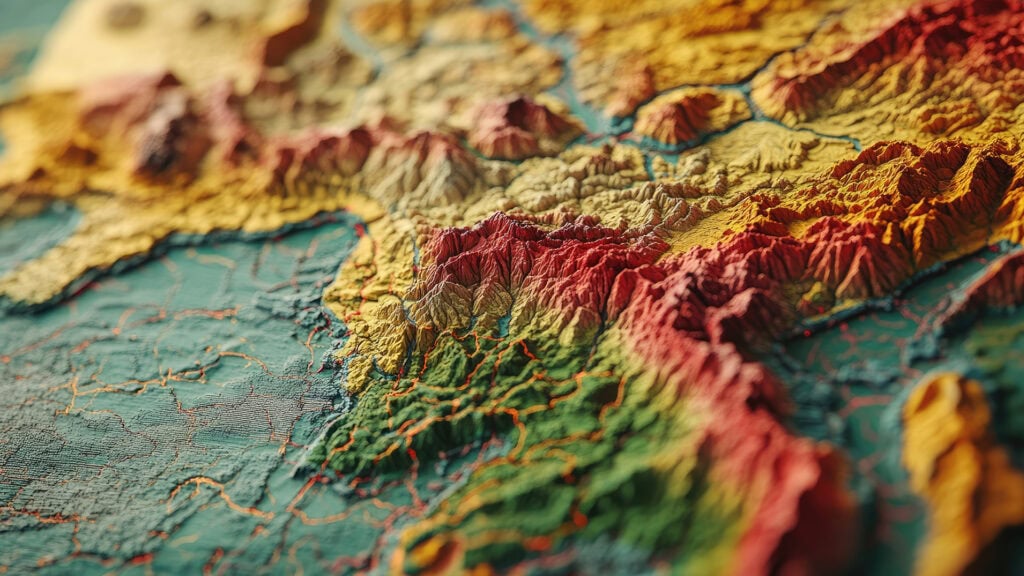Consequences of plate tectonics in the Alps
The Alps were formed around 100 million years ago by the collision of two continental plates, the African and European plates. This collision caused the Earth’s crust to fold in multiple phases, with rock formations pushed over one another and, in some areas, pressed deep into the Earth’s mantle. These processes shaped the current mountain ranges, valleys, and the complex tectonic structures found throughout the Alps.
Orogeny and ongoing activity
While tectonic activity in the Alps has significantly decreased, it is still ongoing. The African plate continues to move toward the European plate at a rate of approximately 1 millimeter per year, rotating slightly counterclockwise. At the same time, the Eastern Alps, particularly around the Hohe Tauern, are rising at a rate of about 1 millimeter per year.
Tectonic faults around Lake Achensee.
The traces of mountain formation are also clearly visible around Lake Achensee. The region exhibits key tectonic structures, including (Oswald et al. 2021):
- Achen Valley Overthrust: Older rock layers were pushed over younger ones, a typical feature of Alpine orogeny.
- Pertisau Fault: This structure separates two tectonic units in the southern region of Lake Achensee.
- Inn Valley Fault: A prominent left-lateral fault that divides the Northern Calcareous Alps from the Central Alps.
These tectonic faults are witnesses to the forces that formed the Alps, and they illustrate the dynamics of the geological processes that are still active.

